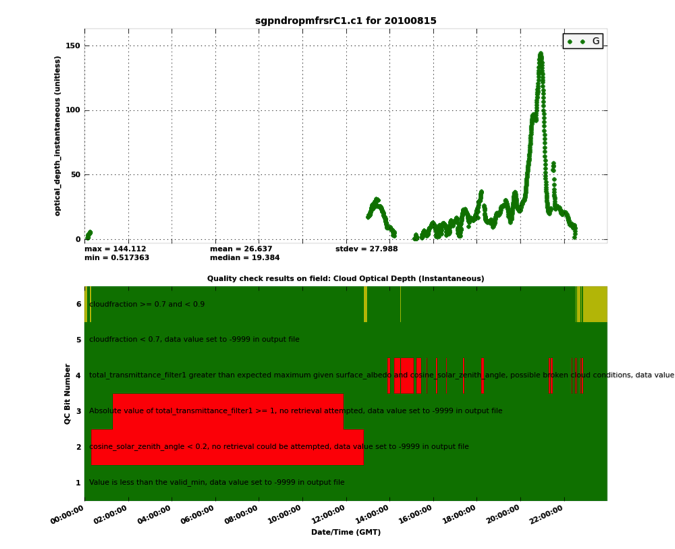NDROP
Droplet number concentration
Baseline VAP
 Cloud droplet number concentration is an important factor in understanding aerosol-cloud interactions. As aerosol concentration increases, it is expected that droplet number concentration (Nd) will increase and droplet size will decrease, for a given liquid water path. This will greatly affect cloud albedo as smaller droplets reflect more shortwave radiation; however, the magnitude and variability of these processes under different environmental conditions is still uncertain. McComiskey et al. (2009) have implemented a method, based on Boers and Mitchell (1994), for calculating Nd from ground-based remote-sensing measurements of optical depth and liquid water path.
Cloud droplet number concentration is an important factor in understanding aerosol-cloud interactions. As aerosol concentration increases, it is expected that droplet number concentration (Nd) will increase and droplet size will decrease, for a given liquid water path. This will greatly affect cloud albedo as smaller droplets reflect more shortwave radiation; however, the magnitude and variability of these processes under different environmental conditions is still uncertain. McComiskey et al. (2009) have implemented a method, based on Boers and Mitchell (1994), for calculating Nd from ground-based remote-sensing measurements of optical depth and liquid water path.
They show that the magnitude of the aerosol-cloud interactions (ACI) varies with a range of factors, including the relative value of the cloud liquid water path (LWP), the aerosol size distribution, and the cloud updraft velocity. Estimates of Nd under a range of cloud types and conditions and at a variety of sites are needed to further quantify the impacts of aerosol-cloud interactions. In order to provide data sets for studying aerosol-cloud interactions, the McComiskey et al. (2009) method was implemented as the Droplet Number Concentration (NDROP) value-added product (VAP).
Primary Derived Measurements
Contact
View all contacts-
Damao ZhangTranslator Pacific Northwest National Laboratory
Related Data Announcements
References
View all referencesLocations
Keep up with the Atmospheric Observer
Updates on ARM news, events, and opportunities delivered to your inbox
ARM User Profile
ARM welcomes users from all institutions and nations. A free ARM user account is needed to access ARM data.


















